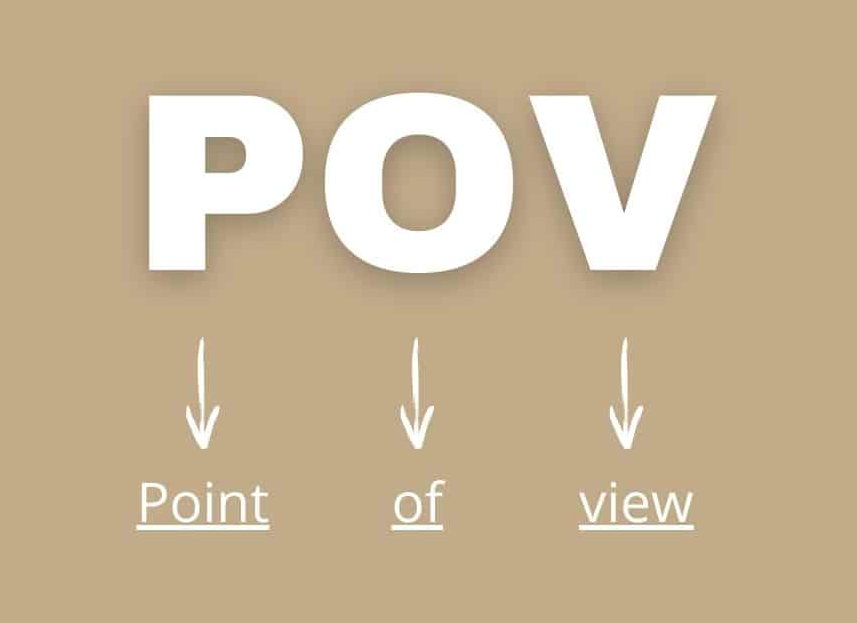In today’s world, abbreviations and acronyms are everywhere. From texting shortcuts to industry jargon, it’s easy to get lost in a sea of letters. One abbreviation you’ve probably come across is POV. But what exactly does POV Stands For, and why is it so widely used? In this article, we’ll break down the meaning of POV, explore its origins, and dive into its many uses across different contexts. Buckle up—this is going to be an interesting ride!
What Does POV Stands For?
POV stands for Point of View. It’s a term used to describe the perspective or angle from which something is observed, narrated, or experienced. Whether it’s in storytelling, social media, or even everyday conversations, POV is all about the way you see or interpret a situation.
Think about it like wearing a pair of sunglasses. The tint of the glasses changes how you see the world—just like your POV shapes your perception.
The Origins of POV: Where Did It All Begin?
The concept of point of view has been around for centuries, primarily in literature and art. Authors and artists have always played with perspective to tell stories in unique ways. The abbreviation POV, however, gained traction with the rise of modern media, especially in filmmaking and digital communication.
When directors in the early days of cinema used “POV shots,” they aimed to make the audience feel like they were seeing the scene through a character’s eyes. Fast forward to today, and the term has found its way into countless other areas, from TikTok trends to philosophical debates.
Popular Uses of POV Across Different Contexts
1. POV in Storytelling and Literature
In storytelling, POV determines how the narrative unfolds and how much the audience knows. There are three main types of POV used in literature:
- First-Person POV: Here, the narrator is a character within the story, using words like “I” or “we.” This perspective makes readers feel like they’re inside the character’s mind.
- Example: “I walked into the room, my heart racing as I scanned for any signs of danger.”
- Second-Person POV: This rare perspective addresses the reader directly with “you,” making them feel like they’re part of the story.
- Example: “You walk into the room, your heart racing as you scan for signs of danger.”
- Third-Person POV: The narrator stands outside the story, describing the actions and thoughts of characters using “he,” “she,” or “they.”
- Example: “She walked into the room, her heart racing as she scanned for any signs of danger.”
Each type of POV creates a different experience for the reader, shaping their connection to the story.
2. POV in Social Media
Here’s where things get fun! Social media platforms like TikTok, Instagram, and YouTube have given POV a whole new life. People use POV to create skits, memes, and short videos that let viewers “step into someone else’s shoes.”
For example:
- A TikToker might create a “POV: You’re the new kid at school” video, showcasing the awkward moments of being the newbie.
- Memes often use POV captions to add humor or relatability, like “POV: When your dog hears the treat bag crinkle.”
These creative uses make POV content entertaining and incredibly engaging.
3. POV in Everyday Conversations
Even outside of creative contexts, POV is part of how we communicate and understand each other. When someone says, “From my POV, this situation seems unfair,” they’re sharing their perspective or opinion. It’s a way of acknowledging that everyone views situations differently, based on their experiences and biases.
Why Is POV So Popular?
POV resonates with us because it’s inherently human. We all see the world through our own unique lens, shaped by our emotions, experiences, and beliefs. By sharing or exploring different POVs, we can connect with others, challenge our assumptions, and even spark creativity.
In the age of social media, POV has become a tool for self-expression. It allows people to tell stories, make jokes, or share insights in a way that feels personal and relatable.
Tips for Using POV Effectively
If you’re a content creator, writer, or just someone looking to spice up your storytelling, here are some tips for leveraging POV:
- Know Your Audience: Think about who you’re addressing and choose the POV that best connects with them.
- Be Consistent: Jumping between POVs can confuse your audience. Stick to one unless the shift serves a clear purpose.
- Experiment: Don’t be afraid to play with different perspectives! Sometimes, a unique POV can make your content stand out.
- Engage Emotionally: Use POV to evoke feelings or create empathy. The more your audience can see through your eyes, the stronger the connection.
Conclusion
So, there you have it! POV stands for (Point of View), but it’s so much more than just an abbreviation. It’s a concept that bridges art, communication, and everyday life. From novels to TikToks, from gaming to photography, POV shapes how we share and experience stories.
Next time you see “POV” in a caption or conversation, take a moment to think about the perspective being shared. Who knows? It might just inspire you to explore a new way of looking at the world.
